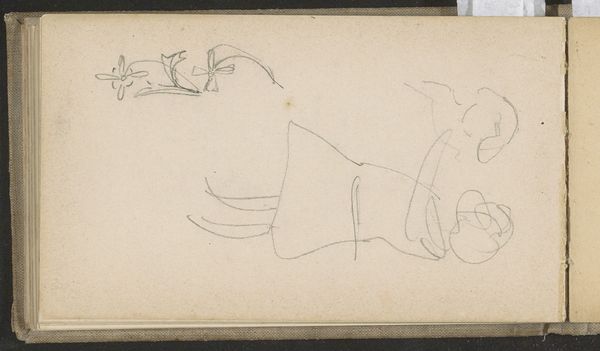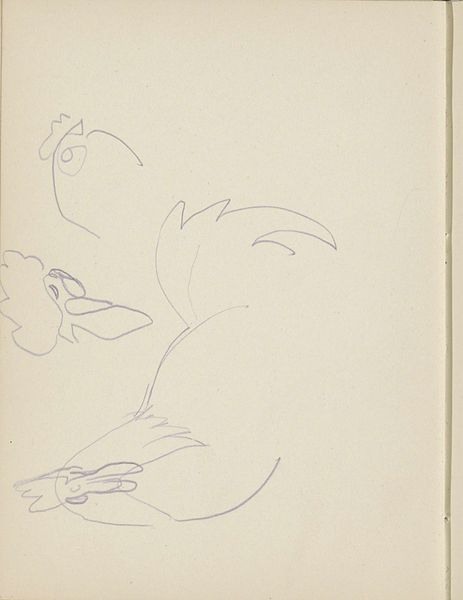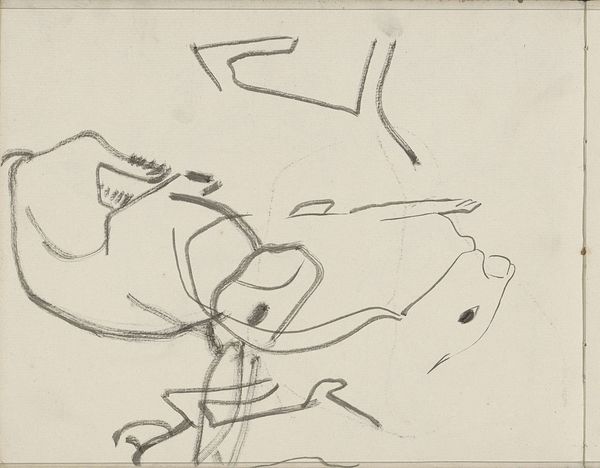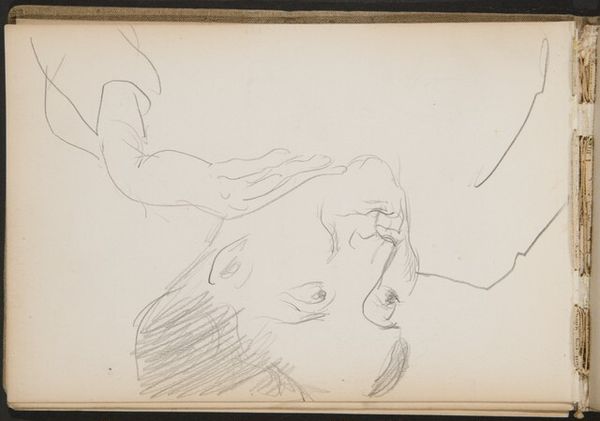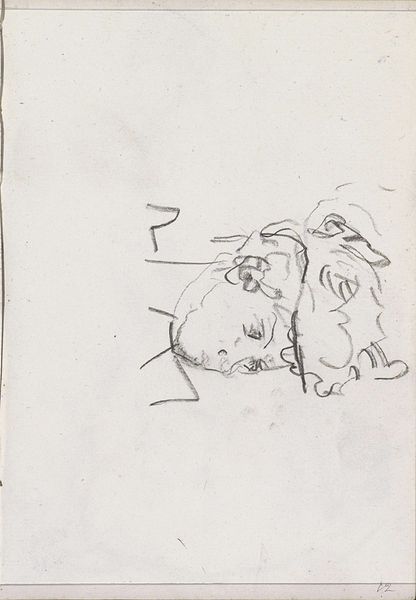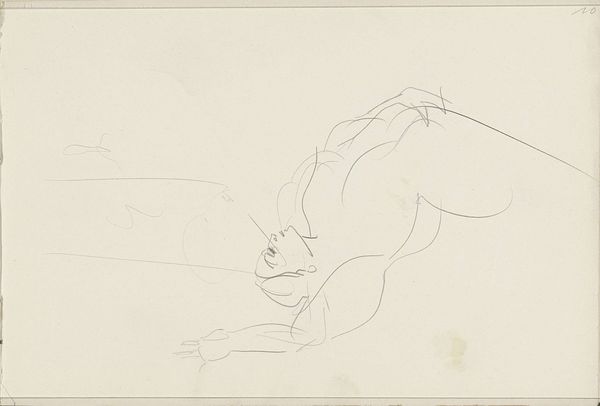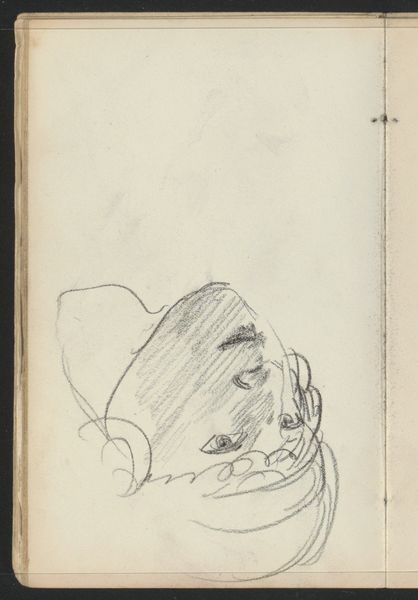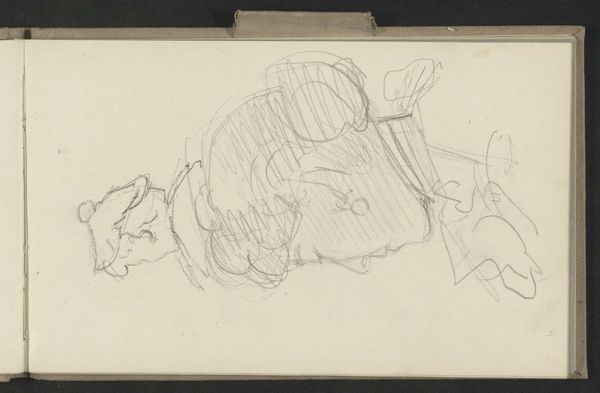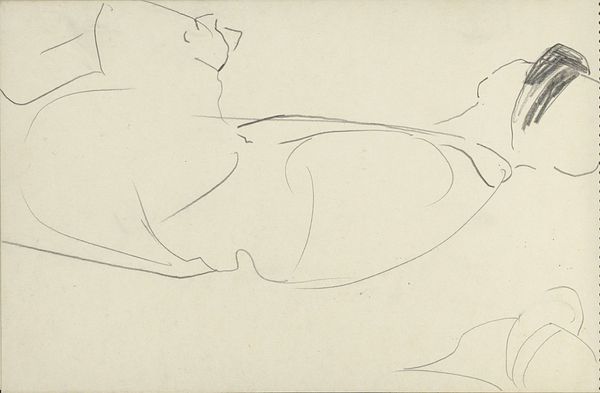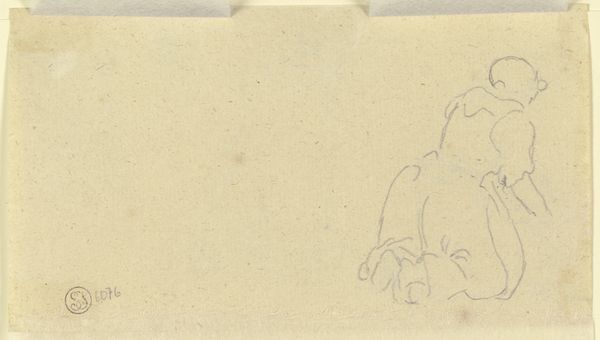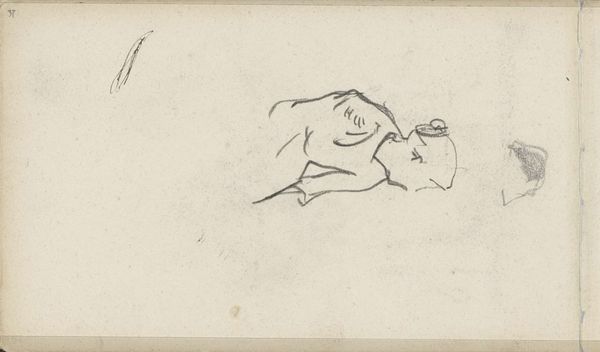
drawing, pencil
#
portrait
#
drawing
#
imaginative character sketch
#
quirky sketch
#
sketch book
#
personal sketchbook
#
idea generation sketch
#
sketchwork
#
character sketch
#
pencil
#
line
#
sketchbook drawing
#
storyboard and sketchbook work
#
sketchbook art
#
realism
Copyright: Rijks Museum: Open Domain
Curator: Welcome. Here we have a drawing entitled "Kippen," dating from 1892 to 1901, by Antoon Derkinderen. It's rendered in pencil. Editor: It’s a curious piece, possessing an energy that’s both frantic and calm simultaneously. I'm initially drawn to the composition; the positioning of the two subjects allows for a compelling juxtaposition. Curator: Precisely. Notice the economy of line Derkinderen employs. Each stroke seems crucial, defining form with minimal effort. The realism of the chickens is interesting in this more raw medium. Editor: What is striking, and I feel necessary, is exploring the potential for these chickens to be representative. Chickens in many societies, including industrialized nations in Europe, represent sustenance, food production and agriculture. It makes me consider this work's relevance at the height of imperialism. Curator: That reading adds a dimension. However, the formal qualities remain primary. Consider the subtle variations in line weight. The artist masterfully modulates pressure to create depth and shadow. The varying quality of the drawing reflects what I think is clear is its genesis as part of the artist's personal sketchbook Editor: I cannot disassociate artistic production with what's happening within cultural power dynamics; art is not created in a bubble. As a study of the agricultural landscape, I interpret this piece as speaking volumes. Curator: And I believe that focusing so heavily on its allegorical potential detracts from appreciating the intrinsic visual intelligence. It’s a constant challenge, reconciling historical context with artistic expression. Editor: Yes, and reflecting critically is paramount. To understand the context of the chicken at that time informs the piece with social meaning that helps one explore it beyond its pure formalism. Curator: It seems we each bring distinct perspectives to bear on "Kippen". A dialogue between form and socio-cultural interpretation only serves to enhance an individual's encounter. Editor: Agreed. And these encounters encourage us to not only study artistic vision, but to think of art and its relation to greater cultural questions and understanding.
Comments
No comments
Be the first to comment and join the conversation on the ultimate creative platform.
